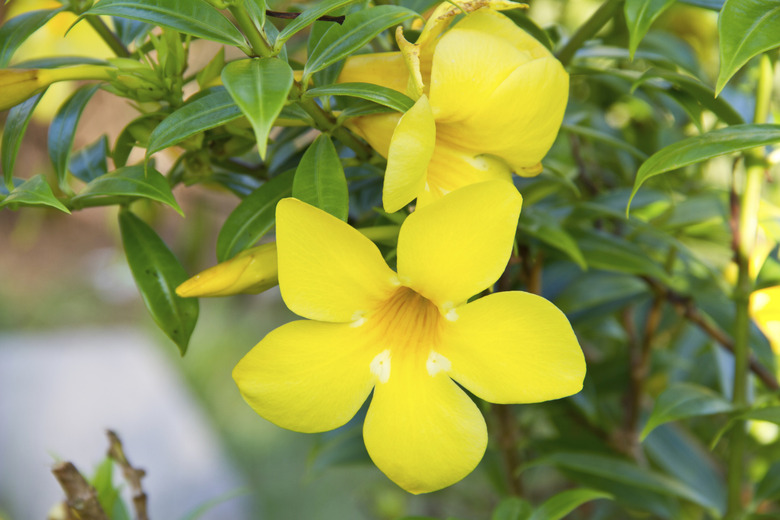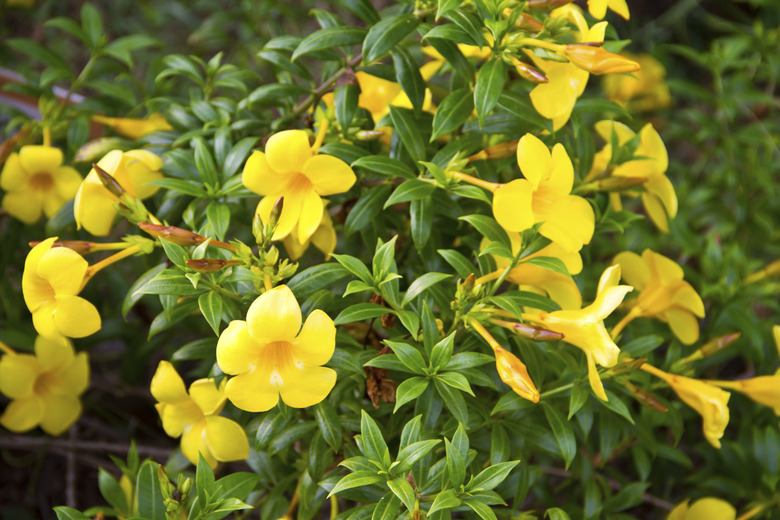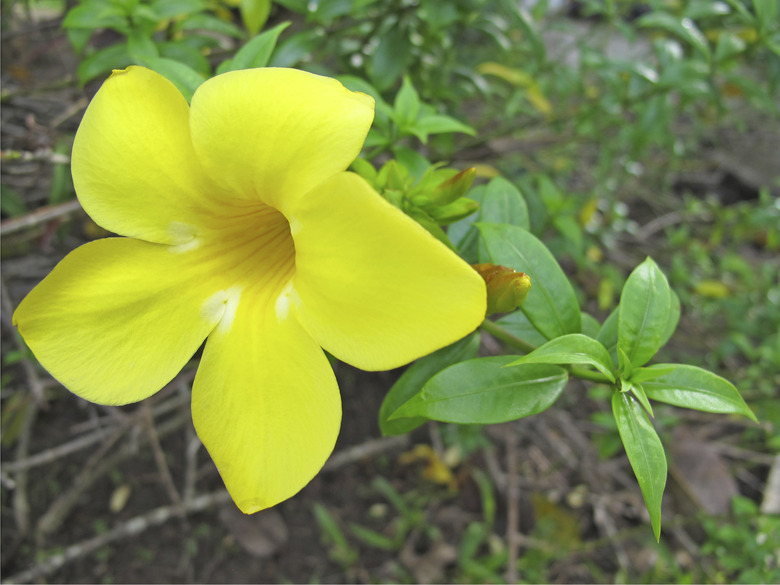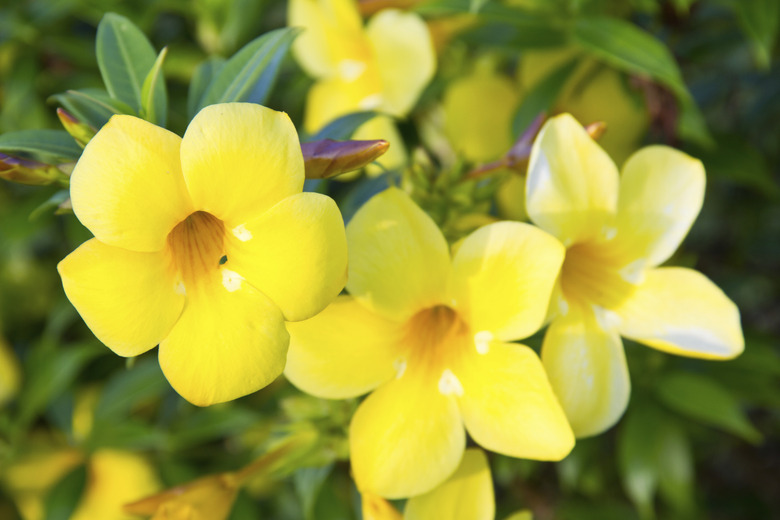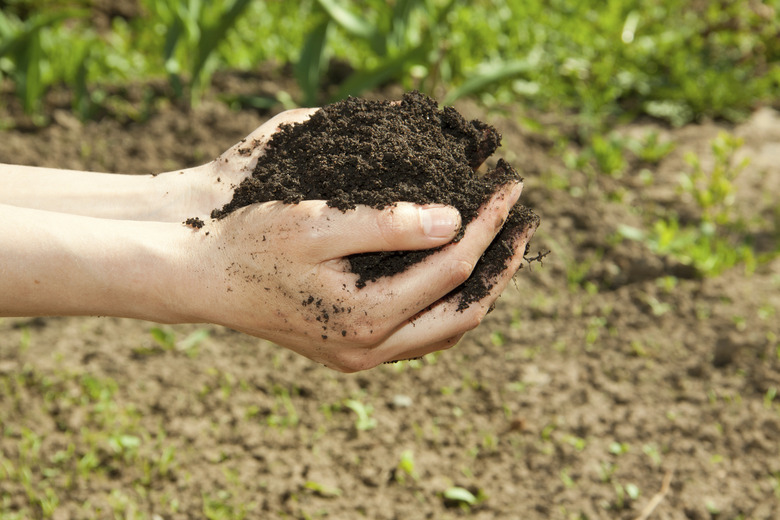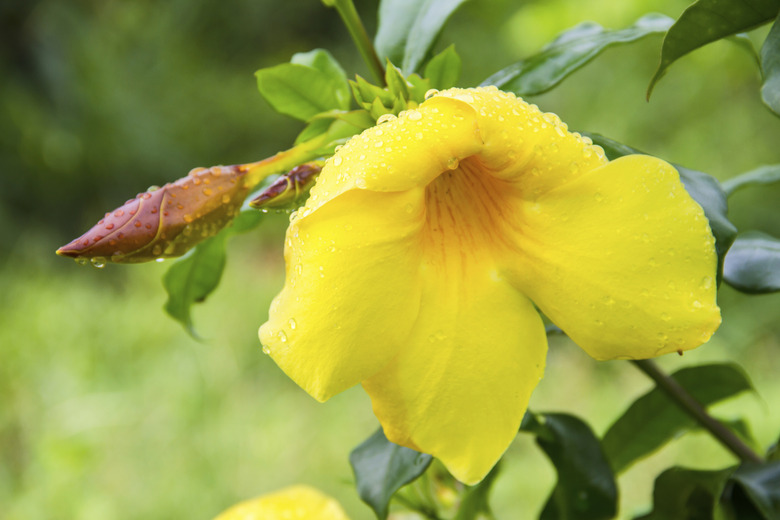Description Of The Yellow Bell Flower
Allamanda, also known as the yellow bell flower or the golden trumpet, is a tropical shrub or vine. The plant is native to Brazil and has rich green foliage and bright yellow blooms. Vines are extremely sensitive to inappropriate growing conditions and require specific care to thrive. The Allamanda is not to be confused with Tecoma stans or the Fritillaria pudica, which are referred to commonly as "yellowbells."
Floral Characteristics
Floral Characteristics
The bright yellow flowers on the Allamanda vine have overlapping petals that create a trumpet shape, and can have a diameter of up to 5 inches. Flowers come into bloom in groups of two or three which come from the tip of stem growth.
Foliage Characteristics
Foliage Characteristics
Yellow bell flowers have evergreen foliage, which means the leaves will remain green, even during the dormant seasons. Leaf blades are whorled and grow to a length between 4 and 8 inches. The plant also puts on prickly green seed pods which blend in and look like a second kind of foliage.
Growth and Pruning
Growth and Pruning
The vine can grow to a length of 50 feet. It is, however, commonly pruned to form a short flowering shrub. The plant is a rapid grower and will quickly vine through a trellis, or across a wall. It will also cascade over the sides of a hanging basket. Vines that stem out and detract from the shape can be pinched off, but over pinching will limit new growth and bloom.
Zone Hardiness
Zone Hardiness
Yellow bell flowers are considered hardy in USDA zones 9 through 11. They cannot tolerate temperatures below 30 degrees, and should be brought inside when there is danger of frost. When trimmed back they can be placed in a pot. They need kept in an area of the home where they can receive bright light.
Basic Care
Basic Care
These plants prefer a rich humus soil, which is kept moist. They have no tolerance for frost or salt, and cannot be planted outdoors in areas where these are a concern. They should be placed in a location where they receive full sun most of the day. Plants should be placed 36 to 60 inches apart to allow room for growth, and trimmed as a shrub, or given a surface from which to vine.
Medicinal Uses
Medicinal Uses
The Allamanda has been used by herbalists to treat a number of conditions including jaundice, malaria and constipation. It has also proven to have antibiotic properties effective against staphylococcus.
